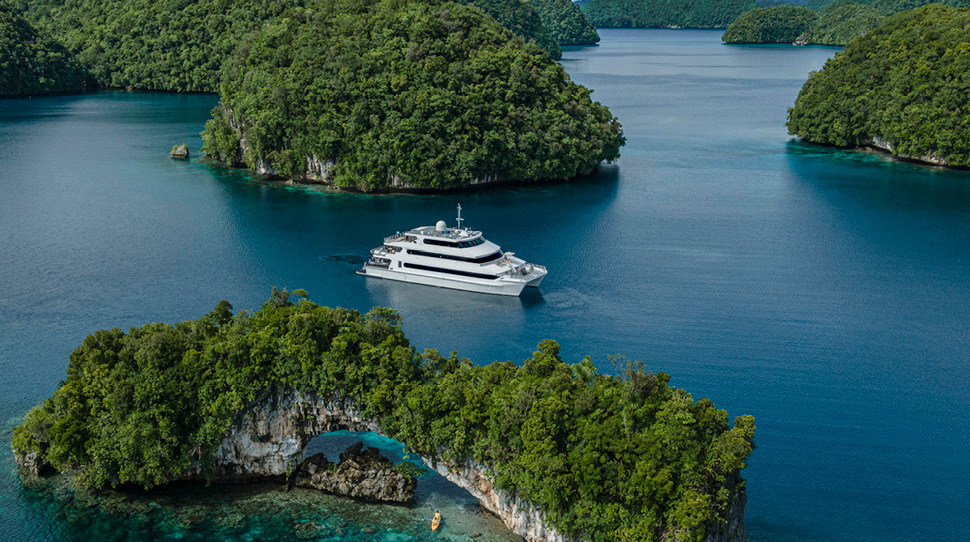

As we paddled along the edge of the hilly limestone islands blanketed with green foliage and occasional Rock Island white lilies, our small group of kayakers didn’t encounter another boat or person in the crystal-clear waters. It was so quiet you could hear the reef crabs tottering on the outcrops and the calls of birds swooping above.
It’s a challenge to find any undiscovered corner of the world, but Palau comes close. Of course, it’s not new (its first settlers arrived in 1000 B.C.), but travelers aren’t as familiar with the remote country between Guam and the Philippines. Yet they should be — Palau’s beauty is astonishing. The best way to see the archipelago’s more than 340 islands (only nine are inhabited) and the thriving marine ecosystem beneath them is aboard the newly renovated Four Seasons Explorer.
After flying into Palau International Airport in Koror, you’ll get picked up and driven to a dock, where a Four Seasons speedboat will bring you to the ship in the UNESCO World Heritage-listed Rock Islands Southern Lagoon for underwater adventures. The island nation has the world’s highest concentration of marine lakes and one of its most diverse coral reefs.
The 128-foot catamaran is like your own personal yacht — there are only 11 cabins for a maximum of 26 passengers, one restaurant and a bar. This intimate ship is great for cruise-averse travelers or those who don’t like crowds. But above all else, this is a special vessel for divers and snorkelers exploring Palau’s turquoise waters on their bucket-list-worthy trip.
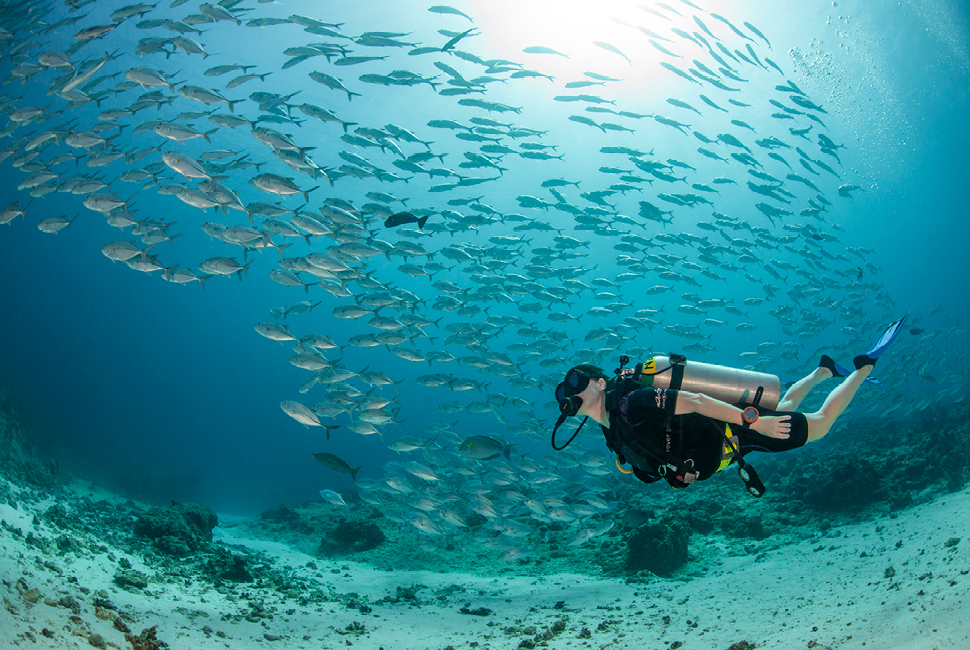
Water Activities
The Explorer, which first started its Palau cruises in October, is a floating PADI 5-Star Dive Center. The stern is outfitted with diving and snorkeling equipment to make heading out for the included excursions easy (the accompanying dive boats and tenders help, too). You’ll set out on numerous trips with expert diver or snorkeler guides as well as your own paparazzi that record your underwater exploits.
Palau has more than 1,400 fish species, 500 coral species and several shipwrecks, making it a prime destination for underwater explorers. It was a treat to grab breakfast and hit the waves early for a snorkel, return to the vessel for lunch and then venture into the ocean for another round. The ship’s guides bring you to the best spots where you will be the only ones gliding through the water aside from the marine life. At our stops, we spotted juvenile hawksbill turtles; neon jellyfish; cobalt-blue starfish; gigantic, vibrantly patterned clams; and many schools of fish amid coral that resembled veiny brains, ginger knobs and avant-garde bowls.
The scuba set on our voyage also embarked on nighttime dives, which made for compelling video. Plunging to lower depths, the divers found reef sharks (Palau became the world’s first nationwide shark sanctuary in 2009) and camouflaging octopuses. If the scuba outings sound enticing, you can get PADI-certified from the Explorer’s instructors and certified divers can take additional PADI courses like “Advanced Open Water” and “Adventure Course.”
On another day, we headed out to Jellyfish Lake, one of the few places you’ll find tourists. This isolated lake on Eil Malk Island is famous for its estimated 5 million golden jellyfish, a subspecies only found here. You’ll likely encounter fewer of them — climate change has lowered the population. Even so, it’s still an unforgettable experience to snorkel (scuba is not permitted) close to these glowing creatures — it’s riveting to watch their translucent bell-shaped bodies expand and contract. And it’s safe since there’s little to no stinging from these jellyfish.
After seeing so much underwater life in Palau, a 7 a.m. birdwatching outing was a satisfying surprise — there are almost 200 bird species in the island nation. We sailed to a lagoon with water so clear you could see the white-sand floor, but our Palau Conservation Society guide pointed to the blue skies, where bush warblers gave a flute-like symphony that seemed straight out of a Disney fairy tale and the Palau fruit dove chirped its throaty, “Woo-woo.” It was a peaceful and scenic way to start the day.
Each evening ends with the onboard marine biologist giving a presentation and a video viewing of the day’s adventures from the paparazzi (you get to take home the footage as a souvenir).
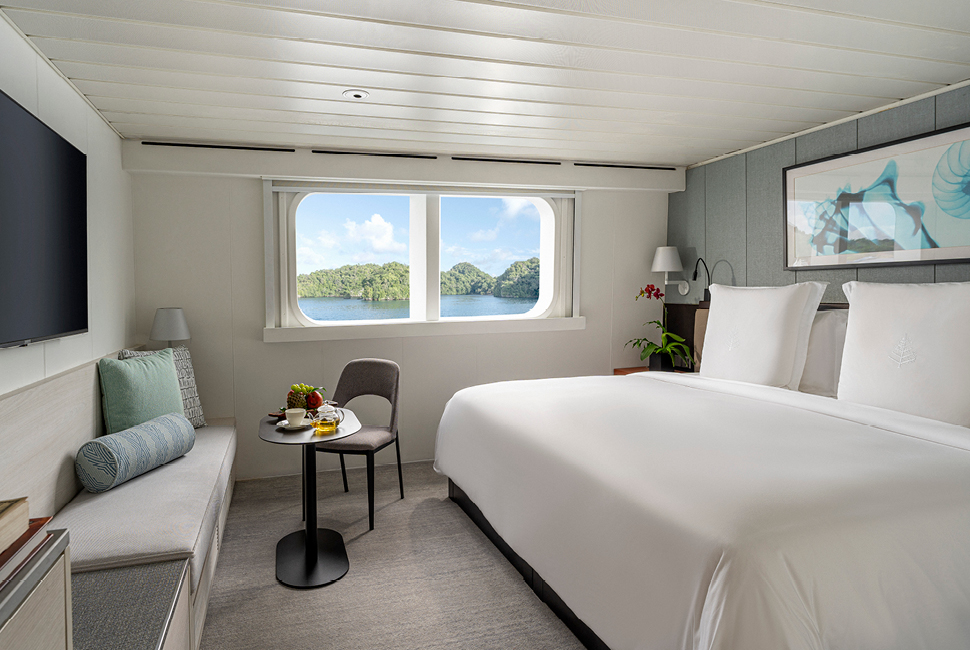
A Floating Hotel
Four Seasons hotel touches are all over the Explorer. The neutral-toned staterooms come with a plush Four Seasons bed and turndown service. Upgrade to the Explorer Suite, an expansive space with a wall of windows facing the bow, a wraparound deck and the only accommodation with a tub. (Soon, you’ll be able to stay ashore in a Four Seasons, too — the brand plans to open the country’s only luxury hotel.) When returning from excursions, a smiling crew member stands waiting for you with chilled, scented washcloths and juice shooters.
The hotel brand has a reputation for its culinary offerings, and the Explorer carries mantle. Talented chef Abhay Singh crafts fine-dining-caliber meals with local ingredients included with your voyage (cocktails like the smoky Chat and Chew, with Cointreau, ginger beer, rambutan and betel leaf, are not). But instead of enjoying them in a suit around a white-cloth-clad table, you may be in your bathing suit on the alfresco dining deck (come here at golden hour for brilliant sunsets).
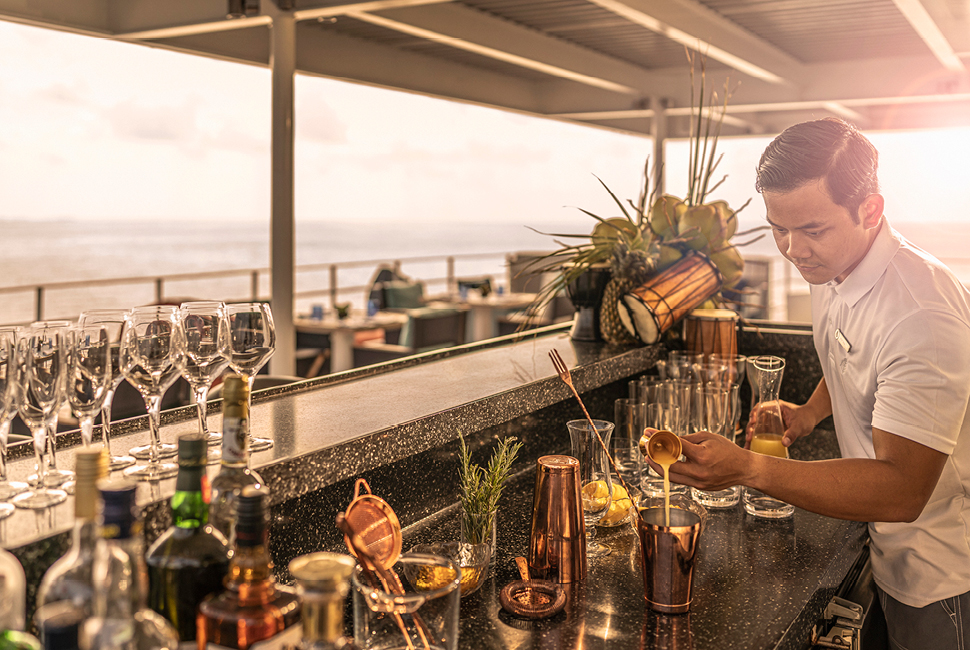
Mornings begin with a fresh, tangy calamansi (a citrus native to the region) juice, a basket of made-from-scratch croissants and your choice of entrée. Joyce’s Mama Egg Scramble — studded with tomatoes, onions, water spinach and pepperoncino — gets plated with a grasshopper woven from coconut leaves. The Palauan banana pancake gets doused in coconut-caramel sauce. Multi-course lunches and dinners run the genre gamut but usually feature seafood — like crab reef tacos, whole-baked coconut lobster and housemade taglioni vongole. On the cruise’s final night, the chef heaved a large banana-wrapped jackfish on a slab of wood to our table and deboned it.
To cap off a hot evening, the chef serves a cold dessert. While the onboard kitchen makes the refreshing calamansi granita and vanilla panna cotta, gelati in flavors like ube come from L’Amarena, a small-batch shop run by an Italian family that moved to Palau.
A common Four Seasons hotel amenity, a luxurious spa, can be found onboard. The therapist can give you treatments on a secluded stretch of beach (for an extra cost) or outside on the ship’s private upper floor behind curtains. The Oceania Spa offers a well-curated menu of locally influenced services like the make-you-melt Palauan Purity Massage, which zaps tension with rhythmic Micronesian techniques and a warm compress made of local herbs like noni, vitex and basil.
Four Seasons prides itself on its golden-rule service, and the crew practices this tenet. Everyone from the marine biologist to the DJ brings authentic warmth and an eagerness to help you in ways big and small.
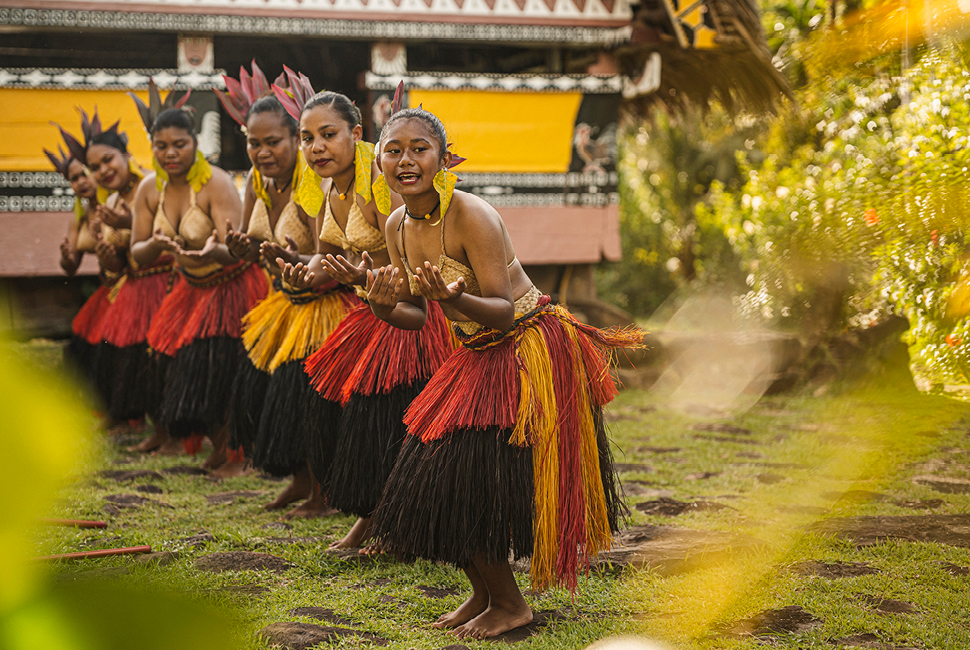
Land Excursions
Dry off and see more of Palau with the Explorer’s shore excursions. Our favorite was a visit to Babeldaob Island’s Airai Bai, a meeting house for the local chiefs. At more than 100 years old, it’s the oldest bai in the country, with a sunny yellow exterior painted with symbols and a steep thatched roof. It served as the backdrop for a local troupe of women in black, red and yellow grass skirts; woven bra tops; and headpieces with flowers and tea leaves, who performed traditional dances while chanting with their booming voices in Palauan.
The Explorer staff set up a bar and upright bean bag chairs for us to unwind while we watched the commanding performance. Afterward, we met the dancers and learned about Palau’s matrilineal society.
There are many other options on land. Hike to Ngardmau to snap photos of the country’s tallest waterfalls. Pedal around Peleliu on a bike tour to discover the island’s role in World War II through sites like the 1,000-Man Cave, Bloody Nose Ridge and an abandoned Japanese tank. See Palau’s oldest archeological site, the Badrulchau Stone Monoliths, 52 hidden-away hillside basalt megaliths.
Visit the Belau National Museum, Micronesia’s oldest museum, to dig deeper into the culture (like the mythology surrounding the country’s origins), history (how Japan’s 25-year rule influenced Palauans) and nature (it’s home to 35 endangered species). And to see where the country is going with sustainable efforts, tour Biota Marine Life Nursery, which specializes in culturing fish, clams and coral for aquariums and local food security.
Yet no matter how far inland you go, you’re never far from the placid Pacific and the tranquility that comes from being in one of the world’s last undiscovered destinations.
Stay tuned for our 2024 Star Awards announcement on February 7.
